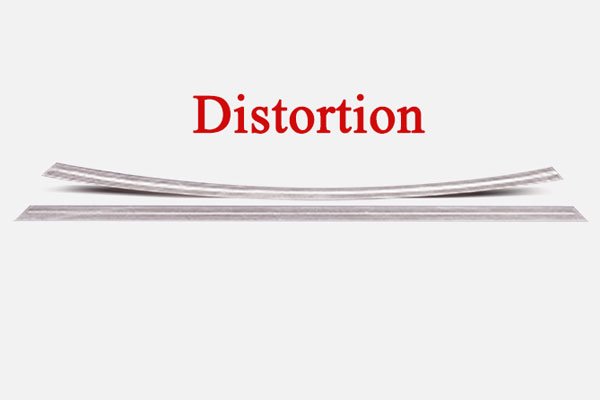Pain: Welding stainless steel thin sheets often results in warping, overheating, and uneven welds.
Agitation: This leads to poor quality and wasted resources.
Solution: Discover methods to achieve precision and efficiency in welding stainless steel thin sheets.
Welding stainless steel thin sheets requires precise control of heat and technique to avoid distortion and ensure clean welds. Learn more about how to avoid warping when welding stainless steel1.
Achieving optimal results involves understanding properties of stainless steel in welding applications2 and using the best equipment for welding thin stainless steel3. Let’s explore how you can master this process.
Why is welding of stainless steel difficult?
Stainless steel’s unique properties make it challenging to weld successfully. Its high thermal conductivity and expansion can cause issues. Learn more about why stainless steel is hard to weld4.
The main difficulty in welding stainless steel lies in its tendency to warp and overheat due to heat sensitivity. Find out how to control heat distortion in welding5.
Understanding stainless steel's properties
- Heat Sensitivity: Stainless steel quickly conducts and retains heat, leading to distortion.
- Oxidation Risks: Without proper shielding gas6, it can form an oxide layer, weakening the weld.
- Thin Sheet Challenges: With thin sheets, overheating is a critical issue, as it can burn through the material.
| Property | Challenge |
|---|---|
| High thermal expansion | Causes distortion during welding. |
| Thin material structure | Increases risk of burn-through and uneven welds. |
| Oxidation potential | Requires careful shielding to maintain material integrity. |
Choosing the right welding method
Different methods can be applied based on the material thickness and project requirements. For thin stainless steel sheets, koolaser handheld laser machine7 is often preferred due to its precision.
How to achieve optimal results in stainless steel thin sheet welding quickly?
Precision and preparation are essential for achieving high-quality results. Start with the right tools and techniques8.
Achieving optimal results requires minimizing heat input, using appropriate shielding gas, and maintaining steady technique. Learn more about efficient techniques for welding stainless steel thin sheets9.
Tools and equipment for success
- Handheld Laser Welder10: Offers precise control with minimal heat input, ideal for thin sheets.
- High-Quality Filler Material: Matches the stainless steel grade to ensure weld strength.
- Shielding Gas11: Argon or a mix of Argon and Helium reduces oxidation risks.
Step-by-step guide to optimal results
Preparation is key
- Clean the material: Remove oils, dust, or oxide layers.
- Secure the sheets: Use clamps to minimize movement during welding.
Optimize your settings
- Lower heat input: Use pulse mode or adjust amperage for thin sheets.
- Use smaller filler rods: This ensures a smooth and even weld bead.
Steady technique matters
- Maintain a steady hand: Avoid erratic movements.
- Keep a short arc length: It helps in controlling heat and improving accuracy.
| Step | Action | Purpose |
|---|---|---|
| Material cleaning | Remove contaminants from the surface. | Ensures a clean and strong weld. |
| Clamp positioning | Secure sheets firmly before welding. | Reduces movement and warping. |
| Equipment settings | Adjust for low heat and precise control. | Prevents overheating and burn-through. |
Advanced tips for faster results
- Use a cooling fixture: Helps dissipate heat quickly.
- Practice overlapping welds: Reduces weak spots.
- Invest in training12: Proper skill leads to efficiency.
Conclusion
Mastering stainless steel thin sheet welding requires precision, preparation, and the right tools. Apply these methods to achieve high-quality and efficient results.
-
Learn practical techniques to minimize distortion and improve weld quality for thin stainless steel sheets. ↩
-
Understand the unique characteristics of stainless steel and how they influence welding methods and outcomes. ↩
-
Discover the tools that professionals recommend for achieving precise and consistent results when welding thin stainless steel sheets. ↩
-
Understand the unique challenges that make stainless steel welding complex and how to address them. ↩
-
Learn effective strategies to minimize heat distortion when welding stainless steel, especially thin sheets. ↩
-
Discover which shielding gases are most effective for preventing oxidation and ensuring weld integrity in stainless steel projects. ↩
-
Explore why Koolaser handheld laser machine is ideal for thin stainless steel, including its advantages and techniques. ↩
-
Explore the right tools and techniques for achieving precision and quality in welding stainless steel thin sheets. ↩
-
Learn effective techniques and tips for welding thin stainless steel with precision and speed. ↩
-
Explore the best handheld laser welding equipment designed for precision and minimal heat input on thin stainless steel sheets. ↩
-
Understand the importance of shielding gases like Argon or Argon-Helium mixes in preventing oxidation and ensuring high-quality welds. ↩
-
Discover resources and training programs to enhance your welding skills for thin stainless steel applications. ↩



